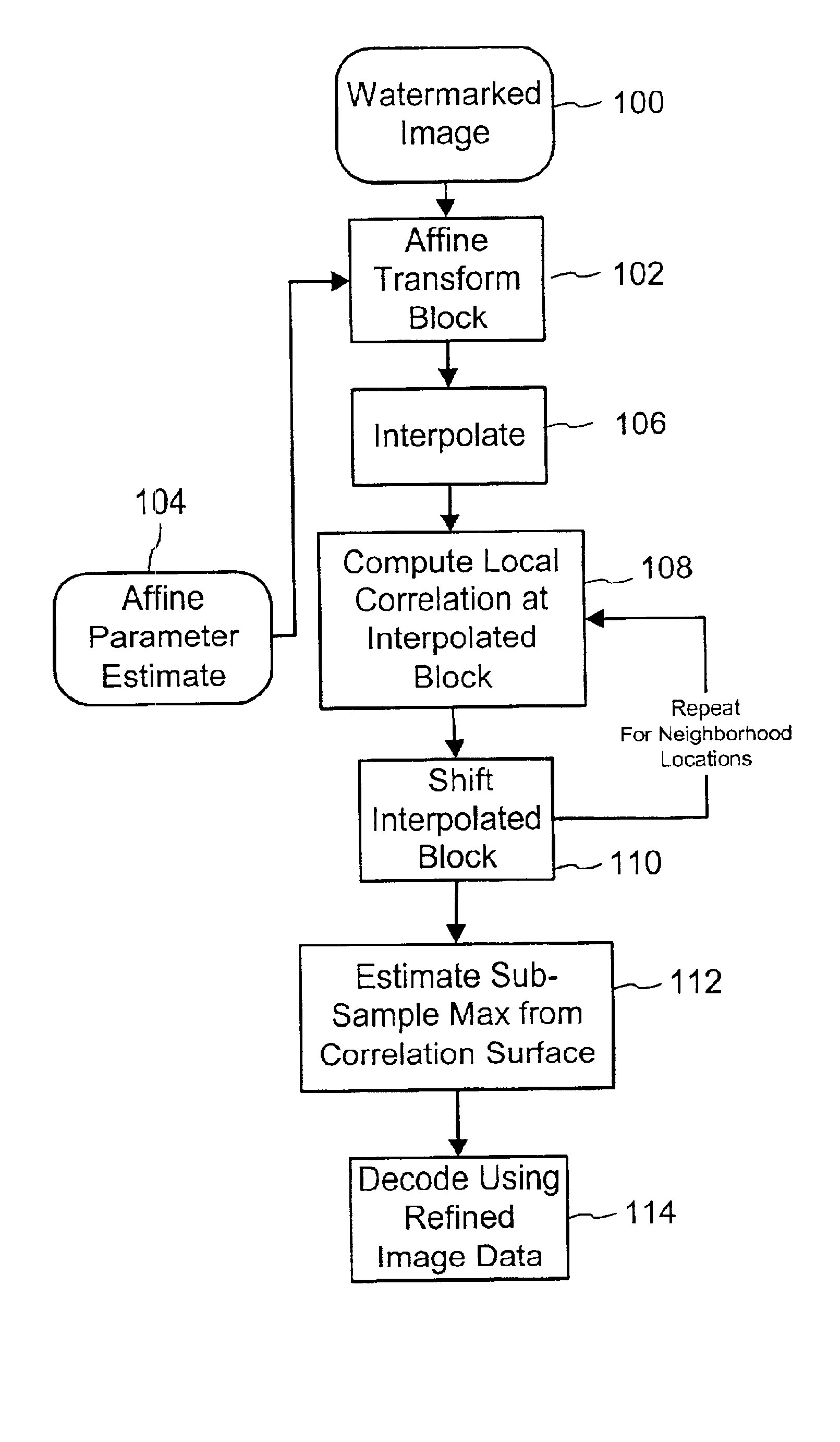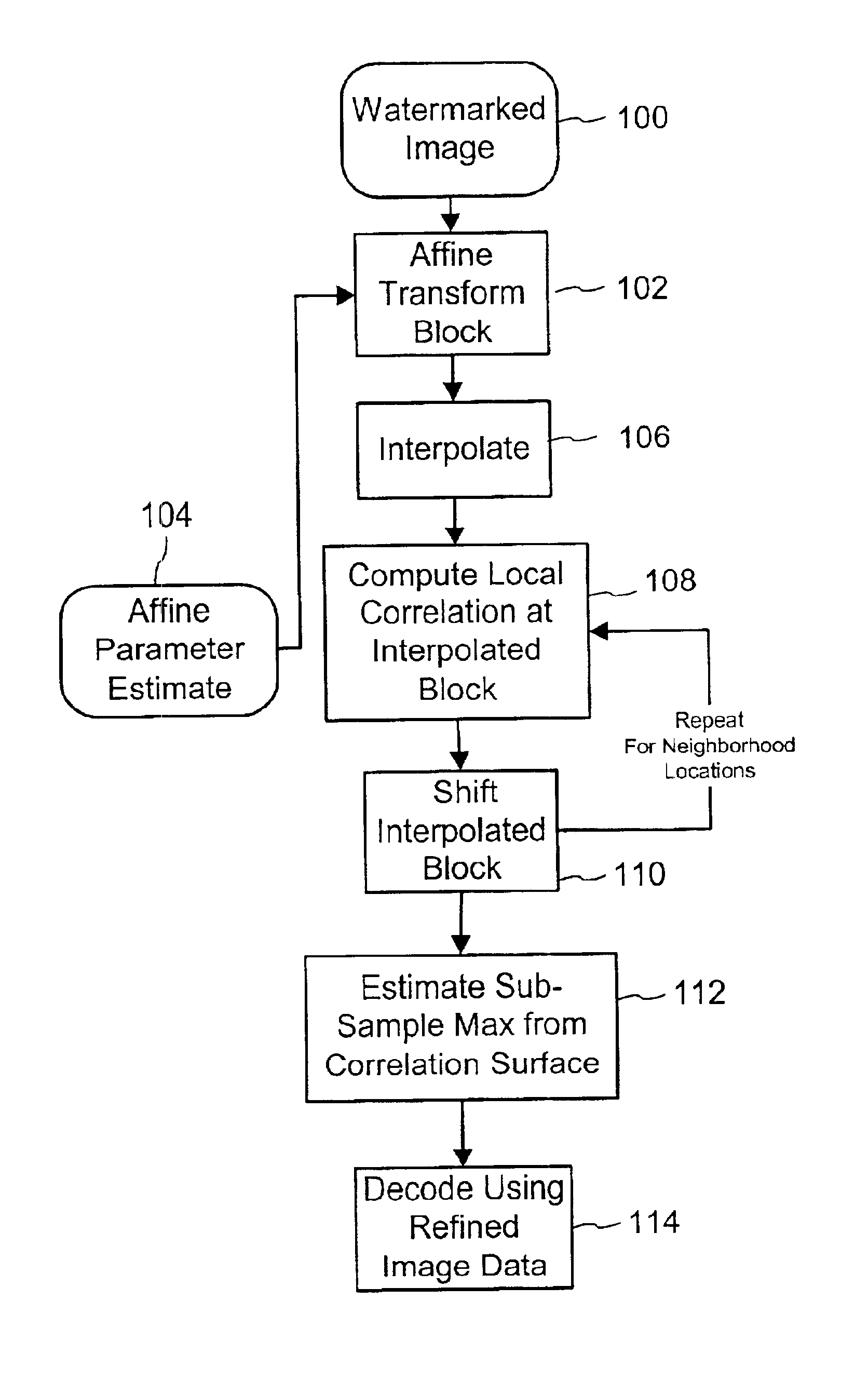Synchronizing watermark detectors in geometrically distorted signals
- Summary
- Abstract
- Description
- Claims
- Application Information
AI Technical Summary
Benefits of technology
Problems solved by technology
Method used
Image
Examples
Embodiment Construction
[0013]FIG. 1 is a flow diagram of a method for synchronizing a watermark detector. The method operates on a watermarked image 100 that has been geometrically distorted, either intentionally or unintentionally. Before the method begins, a global synchronization method, such as those described in watermarking literature is used to compute an estimate of the affine geometric distortion of the image since being embedded with the digital watermark.
[0014]The method operates on small blocks of pixels within an image frame. To extract a watermark message from the block, a watermark reader first needs to determine the geometric distortion and compensate for it. The method described here attempts to provide a more accurate measure of the geometric distortion by refining the estimate of affine geometric distortion.
[0015]To accomplish this, the method applies the affine transform to the small block (102) using the estimated affine transform parameters (104). The method interpolates the image sa...
PUM
 Login to View More
Login to View More Abstract
Description
Claims
Application Information
 Login to View More
Login to View More - R&D
- Intellectual Property
- Life Sciences
- Materials
- Tech Scout
- Unparalleled Data Quality
- Higher Quality Content
- 60% Fewer Hallucinations
Browse by: Latest US Patents, China's latest patents, Technical Efficacy Thesaurus, Application Domain, Technology Topic, Popular Technical Reports.
© 2025 PatSnap. All rights reserved.Legal|Privacy policy|Modern Slavery Act Transparency Statement|Sitemap|About US| Contact US: help@patsnap.com


